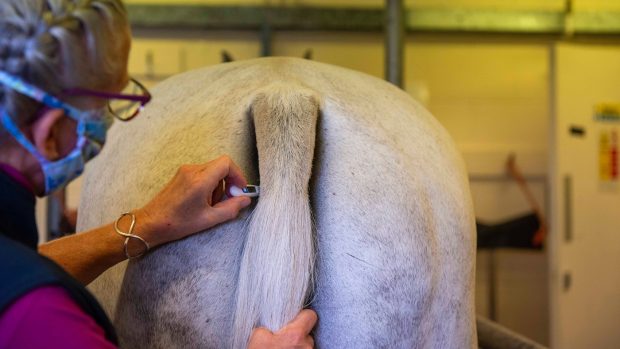NEW data about strangles in horses has provided a “stepping stone” to better disease surveillance in the UK.
Last month researchers published the Surveillance of strangles in UK horses between 2015 and 2019 based on laboratory detection of Streptococcus equi, which aimed to provide “important insights” into the diagnosis and clinical features of strangles in horses. During the study period,1,617 laboratory-confirmed diagnoses occurred from samples submitted by 315 vet practices across the UK.
Reasons for sampling horses included strangles being specifically suspected, horses presenting as clinically ill, respiratory infection screening and post-infection screening. The most frequently reported clinical sign was nasal discharge, followed by a raised temperature. Regions with the highest number of diagnoses included North Yorkshire, Staffordshire and West Sussex, but the researchers believe that the true number and location of UK horses remain poorly understood owing to limitations on the current equine ID system.
Royal Veterinary College PhD student Abigail McGlennon, who led the research and last year launched an online strangles surveillance tool based on laboratory diagnoses, told H&H the data was the “stepping stone” to creating the tool, and provides information for vets and owners on what to look out for.
“When you look at some of the more traditional publications surrounding strangles you always get the description of horses that are really poorly with massive abscesses but one of the things we found, when looking at the clinical signs reported, was that the most frequent were a mixture of pyrexia [a raised temperature of above 38.5°C], nasal discharge and coughing. These signs are less specific compared to the classical signs so that’s definitely something owners should be aware of,” she said.
“If an owner notices their horse is a little under the weather with a snotty nose and raised temperature it’s very important to immediately put in place biosecurity measures. These reports of early signs could mean that owners are actually more vigilant and are noticing their horse looking under the weather and calling the vet out, or it could be that the types of the strains of the bacteria that causes strangles might not be as strong as they used to be, and are causing milder clinical signs. It’s an interesting finding for owners to look out for.”
Ms McGlennon said it’s important for owners to be proactive with biosecurity, rather than reactive.
“It’s better to have protocols in place and it will often save owners a lot of money in the long run if they have procedures running in the background, rather than having to act in the face of an outbreak,” she said, adding that the stigma around strangles is improving thanks to work including the annual Strangles Awareness Week.
“If owners are in the unfortunate situation where their horse catches strangles, there are a lot of resources out there. People are willing to help so it’s important to reach out to that support system.”
The Horse Trust funded the study and the charity’s director of research and policy, Jan Rogers, told H&H that as strangles is not a notifiable disease, it is down to the whole horseworld to manage the spread, as well as it can.
“As an industry we have been asking for the digital identification of horses and while we have the Central Equine Database, which is very good, it’s only as good as the data that’s in it. If owners could update their details online people would be more likely to keep them up to date,” she said. “Once you have a central system with up-to-date information, that would be a good mechanism for diseases to be tracked and traced, and for other databases such as the strangles surveillance system to be linked. If you can tell people where disease is happening then we can make people more aware.”
The Horse Trust’s chief executive Jeanette Allen added the research is an “exciting step towards something that could be outstanding”.
“In the UK we have the expertise and a vibrant equine industry and I can potentially see us having a world-leading surveillance system that could be available on every interested party’s mobile phone,” she said.




